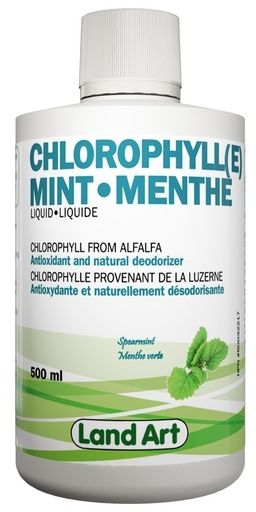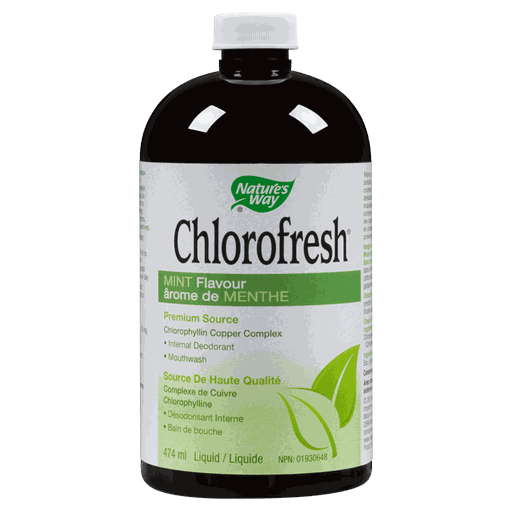What is Chlorophyll?
Chlorophyll has gained a lot of popularity in recent months and for good reason. But what exactly is Chlorophyll and how do we get this beneficial nutrient into our diet? Chlorophyll is a green pigment found in plants that uses light from the sun to create carbohydrates for energy, which allows the plants to grow (photosynthesis).
Green algae, like chlorella, are often marketed as supplemental sources of chlorophyll. Because natural chlorophyll is not as stable as chlorophyllin and is much more expensive, most over-the-counter chlorophyll supplements actually contain chlorophyllin. (1). Most supplements that contain a natural form of chlorophyll, like Chlorella, usually have what’s known as a “Cracked cell wall” or “broken cell wall” because humans cannot digest the high fiber/hard cell walls.
Chlorella not only contains chlorophyll, but other constituents like protein, Vitamin B12, iron, Vitamin C, omega 3’s, other antioxidants, vitamins, and minerals. It also has many health benefits such as the ability to remove heavy metals from the body, support the immune system, and so on. (2)
Chlorophyllin
Chlorophyllin is a semi-synthetic mixture of copper salts derived from Chlorophyll. Because Chlorophyllin is water soluble, it has increased bio-availability – again, that is why most supplements contain Chlorophyllin rather than Chlorophyll. This form is most recognized for its ability to reduce body odors – kind of like an internal deodorant! Other benefits of Chlorophyllin include:
Supporting the immune system
Helps to eliminate fungus/molds from the body
Detoxifying your blood
Cleaning your intestines
Energizing the body
Many help prevent some diseases (3)
“Aflatoxin-B1 (AFB1) a liver carcinogen produced by certain species of fungus, is found in moldy grains and legumes, such as corn, peanuts, and soybeans (2, 8). In hot, humid regions of Africa and Asia with improper grain storage facilities, high levels of dietary AFB1 are associated with increased risk of hepatocellular carcinoma.” https://lpi.oregonstate.edu/mic/dietary-factors/phytochemicals/chlorophyll-chlorophyllin#introduction
If you aren’t keen on taking a supplement, but want to ensure you are getting enough Chlorophyll in your diet, the table below provides some examples and amounts of Chlorophyll found in whole foods:
|
Table 1. Chlorophyll Content of Selected Raw Vegetables
| ||
|
Food
|
Serving
|
Chlorophyll (mg)
|
|
Spinach
|
1 cup
|
23.7
|
|
Parsley
|
½ cup
|
19.0
|
|
Cress, garden
|
1 cup
|
15.6
|
|
Green beans
|
1 cup
|
8.3
|
|
Arugula
|
1 cup
|
8.2
|
|
Leeks
|
1 cup
|
7.7
|
|
Endive
|
1 cup
|
5.2
|
|
Sugar peas
|
1 cup
|
4.8
|
|
Chinese cabbage
|
1 cup
|
4.1 |
tTable Source: https://lpi.oregonstate.edu/mic/dietary-factors/phytochemicals/chlorophyll-chlorophyllin#introductionsp s://lpi.oregonstate.edu/mic/dietary-factors/phytochemicals/chlorophyll-chlorophyllin#introduction
Overall, you might benefit from taking a Chlorophyll supplement and/or increasing Chlorophyll rich foods into your diet. As with any new supplement or diet change, ensure you speak with your practitioner.
(2) https://www.healthline.com/nutrition/benefits-of-chlorella#TOC_TITLE_HDR
(3) https://www.healthline.com/health/liquid-chlorophyll-benefits-risks#overview ting here...
All information and tools presented and written within this Article are for educational and Informational purposes only. Any nutrition, lifestyle and product recommendations are not intended to diagnose, treat, cure, or prevent any disease. Before starting any new supplements, diet and exercise program please check with your doctor or practitioner.





